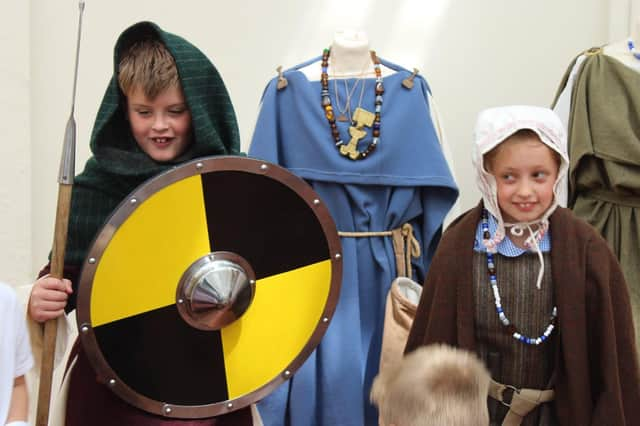Anglo-Saxon workshop created for schools at Sewerby Hall


However, Sewerby is also the site of an important Anglo-Saxon cemetery that was excavated in the 1950s and 1970s.
Using funding from the Humber Museums Partnership and Arts Council England, Education Officer, Robert Chester, has developed a workshop to tell the story of the pagan 6th and 7th century Anglo-Saxons who were amongst the first of the English to live and settle in East Yorkshire.
Advertisement
Hide AdAdvertisement
Hide AdWorking in partnership with a local Sewerby firm, Chapel Prints, 3D printed replicas of a selection of grave goods have been made.
Robert Chester said: “This is very exciting; one of the problems we have had telling this story in the past is that the finds were too precious and delicate for people to handle. 3D printing allows us to make exact replicas of the grave goods, which people can feel and touch, and along with the fantastic costumes made by one of our wonderful volunteers, we are able to really bring these first English settlers back to life.”
Samuel McKie of Chapel Prints said: “It was a wonderful project to be a part of. Being based in Sewerby, I regularly walk under the holly and yew trees which now grow on the grave site
“From scanning the actual grave goods to the hours of digital reconstruction and 3D printing, I found these very modern digital technologies helped bring a real sense of connection and continuity with these Anglo-Saxon people who lived here over a thousand years before us.”
Advertisement
Hide AdAdvertisement
Hide AdThe graves were excavated in 1959 and 1974 and are of national significance.
One grave contained the remains of two women, the first, a richly dressed woman in her early twenties, who was buried in a wooden coffin wearing beads and brooches.
A little way above and lying face down was the contorted body of a woman in her forties.
This has been interpreted as a live burial, perhaps the remains of a servant or slave who might be accompanying her mistress to the afterlife.
The workshop is available in a whole day or half day format and more details and costs can be found on the Sewerby Hall and Gardens website: www.sewerbyhall.co.uk.